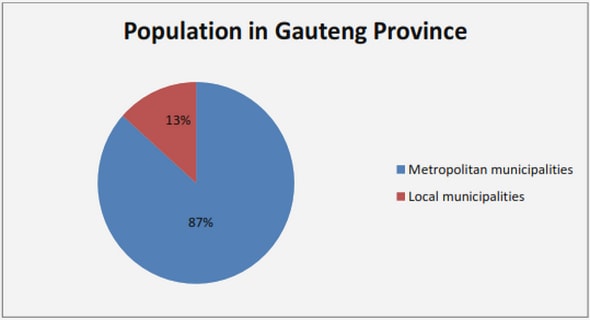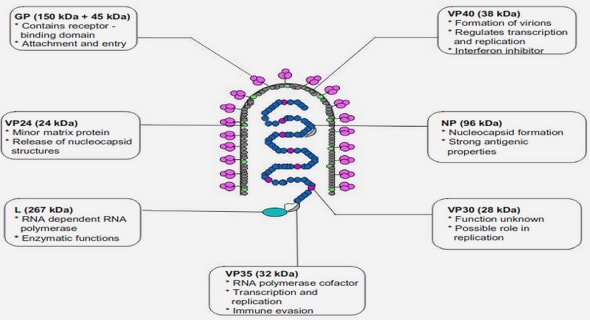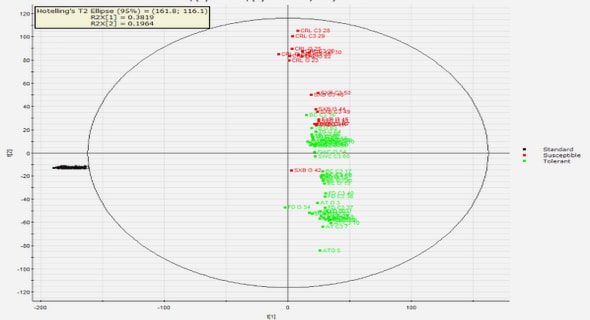Get Complete Project Material File(s) Now! »
In vitro electrophysiological devices
To study compound effect on the heart at early stages, in vitro assays are performed. These assays are realised on cardiac cells (or cardiomyocytes) which are either isolated or grouped, forming a tissue. These steps are essential in cardiac safety pharmacology to detect arrhythmia risks and/or ionic channel blockade. A compound altering the nominal activity of a cardiomyocyte may impact its contraction and then its electrical activity. This is the reason why electrophysiology is so important in cardiac safety pharmacology. To study this electrical activity, several techniques were developed for compound assessment. In particular, we will focus on Patch-Clamp techniques, a widely used method in electrophysiology. Another promising device described in this manuscript is the Microelectrode Array.
Patch-Clamp techniques
Patch-clamp techniques were originally discovered in the 70’s by Erwin Neher & Bert Sakmann [SN84] which granted them to the Nobel prize. These techniques aim at recording electrical activity of a cell from ionic currents passing from the extracellular to the intracellular media. These ionic movements from either side of the cell membrane are characteristic to the cells (e.g. neurons [SSLN10] or cardiac cells [HML+03]). The recorded signal can either be a current or a voltage depending on the protocol used by the analyst. The experimenter can impose a current (current-clamp) or a voltage (voltageclamp), which leads to procure the other physical quantity using Ohm’s law [Kor07].
These recorded signals are essential in safety pharmacology to study compounds and prevent cardiotoxicity and arrhythmia risks. Indeed, the cell membrane (sarcolemma in the case of cardiomyocytes studies) can tell a lot on the cell functionality through the reactions which follow intracellular/extracellular ionic exchanges (see Section 2.2.1). This is one of the main reasons justifying why this technique is widely used in compound investigations in the context of cardiac electrophysiology [KV02, JVD+10, JVM+12].
Overview of Patch-Clamp techniques
The principle is based on the glass properties of the pipettes able to stick to the cell membrane. It induces a gigaseal area, implying locally an electrical isolation of the cell membrane (« patch ») [CN92]. Patch-clamp techniques are an ensemble of 5 main configurations: Whole cell, Attached cell, Perforated Whole cell, Outside-out and Inside-out which are described in the following section.
Automated Patch-Clamp
While patch-clamp is essential, various drawbacks exist and have to be overcome. Indeed, this method is very time-consuming and tedious. Thus, automated patchclamp method was developed in the late 1990’s and aims at replacing the manual patch-clamp process to reduce variability and to increase rapidity. Different studies have shown the interest of automated patch-clamp for high-throughput screening in the safety pharmacology context [BF21, YXZ12]. Several kinds of automated patch-clamp techniques exist such as presented in [YXZ12, DBP+08]. One of these techniques is shown in Figure 2.7.
It represents the bottom of one perforated well, on which a cell is attached and perforated. A probe is connected between the extracellular space and the intracellular space allowing the electrical recording of the attached cell.
Microelectrode Arrays
Microelectrode arrays (MEA) were originally developed in the 50’s to measure the neuronal activity [Che07] whereas its first use on cultured cells was performed around twenty years later [TJSL+72, Pin06]. MEA devices correspond to plates on which several electrodes are placed in order to record the electrical cells activities. They were highly developed in the last decades due to its interest in cardiac safety pharmacology [MBGF04, SEG+03, MdKD+18]. These improvements tend to automise the experimental process of electrical activity recordings.
Optimisation of the classification success rate
The method proposed consists in choosing an element of the Stiefel manifold to define the input of the classifier: x = MT g. The goal is to optimise the score (AS) introduced and commented in the section above. Optimising over all the possible elements of the Stiefel manifolds (of multiple and unknown dimension k) would be prohibitive. To circumvent this, a double greedy approach is proposed. A comprehensive analysis of the possible formulation of greedy methods and their analysis is proposed in [Tem15].
The heuristics we follow are the following: the smaller the dimension of the input, the better it is in terms of palliating the curse of dimensionality; aiming at reducing possible overfitting phenomena, the sparser the orthonormal vectors of M, the better it is. Henceforth, the strategy which is investigated is the following: we start with k = 1 and look for a vector of unitary norm such that at each step of a greedy method, we maximise (AS). When the error on a validation set stagnates and start increasing (early stopping criterion [Pre98]), we start considering k = 2. The first column vector of M is the result of the previous step of the method, and by a greedy approach we construct a second unitary norm column vector, orthogonal to the first one. This can be iterated until the error on a validation set starts increasing as soon as we start building the (k + 1)th vector.
Computation of (AS)
Before detailing the double greedy algorithm in Section 5.2.2.2, let us introduce a strategy to approximate the measure of the success events (AS). In general, the densities p0 and p1 are not known. Instead, samples are given. To approximate the integral in Equation (5.5), we use a Montecarlo approach: in the present case, it turns out to be a counting of how many samples are correctly classified, that is y = y). The difficulty is to precisely estimate the regions S0, S1 and S2. For that, an estimation of the values of p0, p1 is required. Since the dimension k is usually small (for instance k = 1;2;3), a Kernel Density Estimation (KDE) is a viable way to estimate the values of p0 and p1 and hence to have an approximation of the decomposition of S. For larger values of k, KDE could become impractical and costly from a numerical point of view [LW19]. A surrogate is proposed, based on the use of the Mahalanobis distance [DMJRM00, XNZ08]. This provides a perfect outcome in the case of Gaussian distributions. Since, in general, the projected densities p0 and p1 are not Gaussians, an approximation based on hierarchical clustering is proposed. Roughly speaking, classes i (i = 0;1) may be seen as a mixture of Gaussian distributions of means ((1) i ; : : : ;(l) i ) and covariance matrices ((1) i ; : : : ;(l) i ), that can be computed by clustering. For an observation x with a label y = i the success event s is given by: d(k) i = (x (k) i )T [(k) i ]1(x (k) i ); i = 0;1.
A high-dimensional low sample size example
We consider a numerical illustration of a high-dimensional low sample size regime. For this ng = 105, and the number of samples in the training set is ns = 200, evenly distributed between the two classes. The validation set consists of nv = 100 samples. Let I = 10; : : : ;20 be a set of indices, whose cardinality is #I = 11. The probability density function reads: (g) = 1 2 0(g) + 1 2 1(g).
Table of contents :
I Introduction
1 Preamble
1.1 Context: Safety pharmacology
1.2 Problematic and mathematical aspects
1.2.1 Classification problem
1.2.2 Challenges
1.3 Contributions
1.4 Organisation of the manuscript
2 Cardiac Safety Pharmacology
2.1 Introduction
2.2 Cardiac cell
2.2.1 Sarcolemma
2.2.2 Electrical activity
2.2.2.1 Electro-chemical equilibrium
2.2.2.2 Stimulation and cardiac action potential
2.2.2.3 Propagation
2.2.3 hIPSC-CM
2.3 In vitro electrophysiological devices
2.3.1 Patch-Clamp techniques
2.3.1.1 Overview of Patch-Clamp techniques
2.3.1.2 Automated Patch-Clamp
2.3.2 Microelectrode Arrays
2.3.2.1 Devices
2.3.2.2 Extensions
2.4 Conclusion
3 Mathematical modelling and simulations
3.1 Introduction
3.2 Action Potential simulation
3.2.1 Different AP models
3.2.2 Drug modelling
3.3 Field Potential simulation
3.3.1 Finite element mesh
3.3.2 Bidomain model
3.3.2.1 Boundary conditions
3.3.2.2 Source term: Iapp
3.3.3 Electrode model
3.3.4 Heterogeneity
3.3.5 Example of applications
3.3.5.1 Field Potential simulation at control case
3.3.5.2 Example of EAD simulation
3.4 Conclusion
4 Summary
II Methodology
5 Double Greedy Dimension Reduction method
5.1 Introduction
5.1.1 Notations and assumptions
5.2 Method
5.2.1 Classification score in the reduced space
5.2.1.1 Relation to the total variation
5.2.1.2 Relation to the Hellinger distance
5.2.1.3 Relation to the symmetrised Kullback-Leibler divergence
5.2.1.4 Some words on the semi-supervised classification
5.2.2 Optimisation of the classification success rate
5.2.2.1 Computation of (AS)
5.2.2.2 DGDR algorithm
5.2.3 Principle of analysis
5.3 Computational studies
5.3.1 Comparison with feature selection
5.3.2 Comparison with PCA
5.3.3 Comparison with metric learning techniques
5.3.4 A high-dimensional low sample size example
5.3.5 Application to classification problems
5.3.5.1 LSVT voice rehabilitation
5.3.5.2 Wisconsin breast cancer
5.4 Conclusion
5.5 Appendix
6 A method to enrich experimental datasets by means of numerical simulations in view of classification tasks
6.1 Introduction
6.2 Method
6.2.1 Context and notations
6.2.2 Augmented set enrichment based on the Hausdorff distance: ASE-HD
6.2.2.1 Analysis of the ASE-HD algorithm
6.2.3 Reducing noise oversensitivity and bias induced errors: pruning
6.2.4 On realistic scenarios
6.2.4.1 Biased database
6.2.4.2 The Validation set partially covers the set of possible outcomes
6.3 Discretisation of the method
6.3.1 Density estimation in high-dimension
6.3.2 Computing the Hausdorff distance of sets
6.3.3 Summary of the method
6.4 Numerical experiments
6.4.1 Two-dimensional cases
6.4.1.1 Influence of the KNN parameter
6.4.2 A model in electrophysiology of cells
6.4.2.1 Biased data
6.4.2.2 Dictionary entry computation
6.4.2.3 Datasets preprocessing
6.4.2.4 Computational results
6.5 Conclusion
6.6 Appendix
6.6.1 MV: scores in the incomplete validation set scenario
7 Conclusions
III Patch-clamp studies
8 Introduction
9 Channel activity estimation
9.1 Introduction
9.2 Methods
9.2.1 Stochastic AP Models at Baseline and under AS
9.2.1.1 Stochastic Human Ventricular ORd Model
9.2.1.2 Adrenergic Signaling model
9.2.2 Synthetic Data
9.2.3 State-Space Formulation and Augmented States
9.2.3.1 State-Space Formulation
9.2.3.2 Augmented State-Space
9.2.4 Individual and Combined DGDR- and UKF-based Methods
9.2.4.1 DGDR and Dictionary entry computations
9.2.4.2 UKF
9.2.4.3 Combined UKF-DGDR
9.2.5 Performance Evaluation
9.2.5.1 AP estimation
9.2.5.2 State and parameter estimation
9.3 Results
9.3.1 Implementation of UKF method
9.3.2 Combined DGDR and UKF Methods: Initialisation Effects
9.3.3 Combined DGDR and UKF Methods: Updating Effects
9.3.4 Performance Comparison
9.3.5 Replication of AP traces and Biomarkers at Baseline
9.3.6 Estimation of Phosphorylation Factors, AP traces and Biomarkers under AS
9.4 Discussion
9.4.1 DGDR Method
9.4.2 UKF Method
9.4.3 Combined DGDR-UKF Method by Initialisation and Updating
9.4.4 Estimation of Ionic Current Conductances at Baseline
9.4.5 Estimation of Phosphorylation Levels of Cellular Substrates under AS Conditions
9.4.6 Characterisation of Spatio-temporal AP Variability from Parameter Estimates
9.4.7 Limitations and Future Studies
9.5 Conclusion
10 Automated Patch-Clamp signal classification
10.1 Introduction
10.2 Material & Method
10.2.1 Experimental protocol
10.2.1.1 Compounds
10.2.1.2 Signal traces
10.2.2 Pre-processing
10.2.2.1 Dictionary entry computations
10.2.2.2 Sets generation
10.2.2.3 Data Rescaling
10.2.3 Post-processing
10.3 Results
10.3.1 First study case: Validation of the method
10.3.1.1 Detailed results:
10.3.2 General Application
10.3.2.1 Computational Time
10.3.2.2 Second and Third study cases
10.3.2.3 Fourth study case
10.3.2.4 Comparisons
10.4 Discussion
10.5 Conclusion
10.6 Appendix
10.6.0.1 Second study case
10.6.0.2 Third study case
11 Conclusions
IV Microelectrode arrays studies
12 Introduction
13 Oriented dimension reduction method to assess ion channel blocking and arrhythmia risk in hIPSC-CMs
13.1 Introduction
13.2 Material & Method
13.2.1 Experimental setup
13.2.1.1 Cell culture
13.2.1.2 Test compounds
13.2.1.3 MEA recordings
13.2.2 MEA computational model
13.2.2.1 Heterogeneity
13.2.2.2 Drug modelling
13.2.3 Dictionary entry computations
13.2.3.1 Electrophysiological biomarkers
13.2.3.2 Wavelet coefficients
13.2.4 Classification
13.2.4.1 Classification optimisation
13.2.4.2 Cross-validation
13.3 Results
13.3.1 TdP classification
13.3.1.1 Tests setup
13.3.1.2 Results of TdP classification
13.3.2 Channel classification
13.3.2.1 Tests setup
13.3.2.2 Binary classification
13.3.2.3 Ternary classification
13.4 Conclusion
13.4.1 Algorithm
13.4.2 TdP risk assessment
13.4.3 Ion-channel blockade
13.5 Appendix
13.5.1 Field Potential Biomarkers computation
13.5.2 Calcium Signals Biomarkers computation
14 Application of ASE-HD/DGDR coupling on cardiac field potentials
14.1 Introduction
14.1.1 Applications
14.2 Method
14.2.1 Coupling
14.2.2 Post-processing
14.3 First application: Ncardia dataset
14.3.1 Experimental setup
14.3.2 Pre-processing
14.3.2.1 Datasets construction
14.3.3 Results
14.4 Second application: NMI dataset
14.4.1 Experimental setup
14.4.2 Pre-processing
14.4.2.1 Dictionary entry computations
14.4.2.2 Datasets construction and data rescaling
14.4.3 Results
14.4.3.1 Drug vs Control
15 Conclusions
V Conclusion


